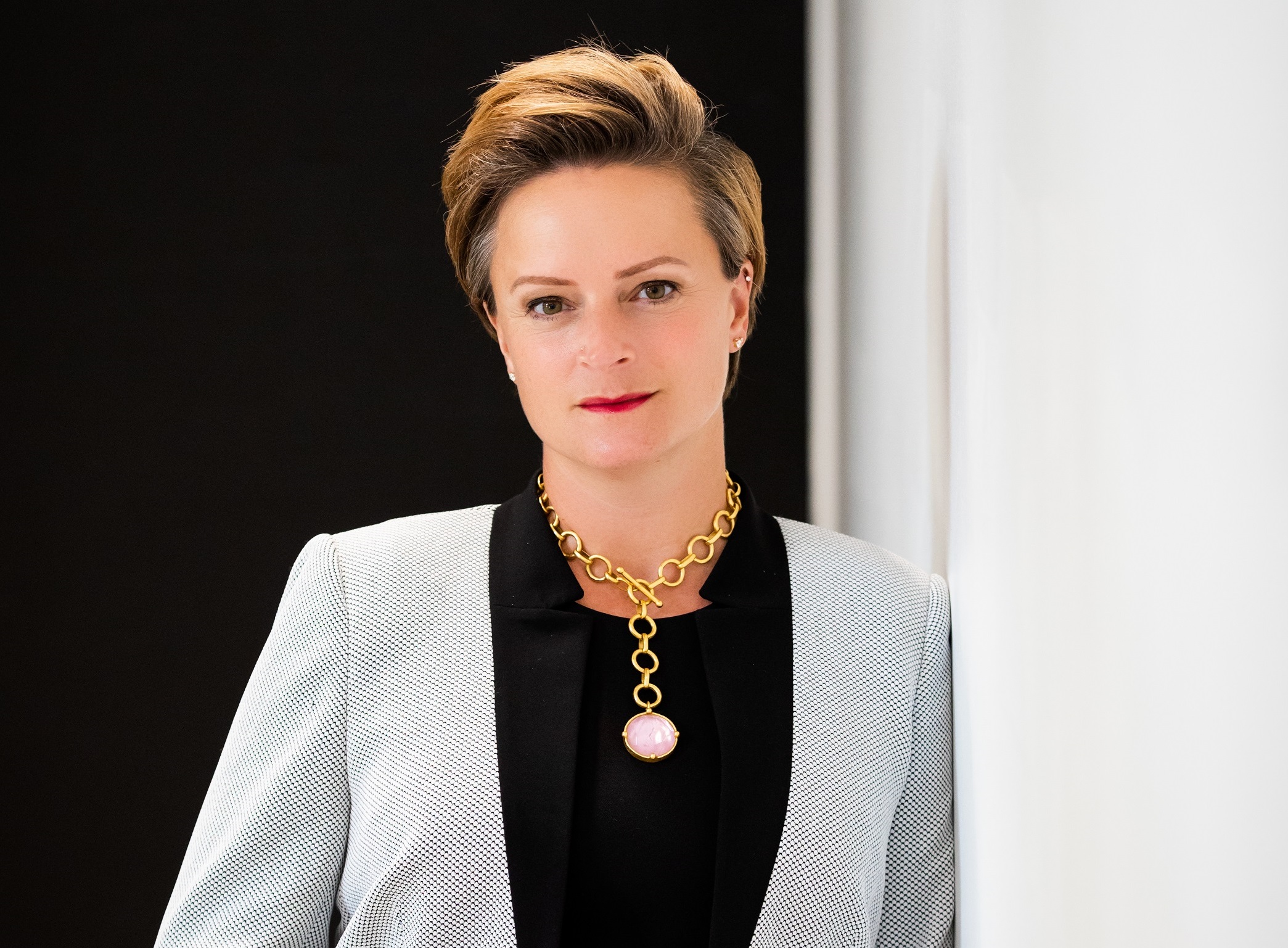
Some people just seem steeped in transport. Carol Schweiger is one of those: she’s had nearly five decades’ experience consulting in ITS and advanced public transportation systems and is a regular speaker at the industry’s international conferences and congresses.
Her interest runs very deep: you assume she must have had a train set when she was six, or something. “So you already know the story!” she laughs. It wasn’t a train set – it was the real thing. “When I was a little girl, my grandparents on my mother's side lived in New York City,” she recalls. “I grew up in the suburbs of Boston so we would go to visit my grandparents. I was totally enamoured with public transport, and near where my grandparents lived there was a pedestrian bridge that went over a set of subway tracks. On a clear day, you could see into the next station down the line. And strangely enough, on a really clear day, you could actually see the Empire State Building. But I started to think to myself: how did they run these subways? And I was probably seven or eight, and I think my parents thought: ‘oh boy, something's wrong here’.”
Schweiger wrote letters to New York City Transit Authority, asking things like: why do some trains stop everywhere and why are some just express services? The authority answered. “I think I wrote three letters to them,” she laughs. “They had a public relations department, and I was just so excited when I would get a letter [back].”

Majoring in math
The seed of the interest in transportation was sown, and Schweiger decided she wanted to be transport planner as a career. However, there were no undergraduate transport courses at the time, so she became a mathematics major to get the background for graduate school work in transport. “In my first job, I wasn't really a planner,” she says. “I did a little more on the data analysis side, but I worked in a company that had government contracts with the US Department of Transportation, and specifically the Federal Transit Administration [FTA].”
There were also projects with local public transport authorities. “That whole side - of an agency operating what we now call mobility services - intrigued me,” she recalls. The company would give technical assistance to the FTA in a variety of areas. “So my boss at the time said: ‘We just received a task order about helping this agency in Oregon with scheduling software. Carol, you go to Oregon and go help them.’”
This was not what she was expecting. “So after I closed my mouth and got up from the floor, I thought: ‘How am I going to do this? I don't really know very much about scheduling software’. That was the beginning and it was an end. It was the beginning of my career in ITS: I never looked back.”
“As I got my voice a little bit more, they recognised that I had something to say, whether they agreed with it or not”
She began to build her career on providing technical assistance, mostly to public transport agencies that were interested in technology. “I would help them write specifications, help them through the procurement process, help them oversee the implementation. And then I also did - and still do - some research for both our federal government and for the US Transportation Research Board.”
Schweiger developed a number of training courses. “I did training for a long time in public transport technology, because it’s very hard for people that work in those authorities to really plan or strategise for technology, because they are doing minute-to-minute operations: ‘This bus just broke down - I need to get another bus there - I need to get that bus back to the shop - I need to make sure people are transferred properly and everything goes smoothly.’ That's what they deal with, which is a very reactive environment. When you're planning for technology, it's longer term, more strategic. You’ve got to really think about it over a certain period of time.”
The ITS moniker
While Schweiger’s name is synonymous with ITS, there was no ‘ITS’ when she started. “At the beginning, it had no moniker,” she says. “There was no name for it. They really didn't have an umbrella term until several years after I was into it: then they called it ‘intelligent vehicle highway systems’ - something that I never really appreciated, being a public transport person. It was because the primary amount of funding for technology was on the highway side, so it had more of a highway connotation. And we'd always say: ‘Yeah, but public transport uses roads and highways, they should be included’. And then eventually they got rid of the ‘vehicle highway systems’ and just called it ‘intelligent transport systems’.”
When Schweiger began life in the industry, it looked very different in other ways, too. “I was one of the only women in the room when I started. I actually worked with a wonderful fellow, and on my first couple of business trips the client thought that I was his daughter. But as I got my voice a little bit more, they recognised that I had something to say, whether they agreed with it or not. But it pretty much has been male-dominated up to the last couple of years. We're all trying to promote women when they're very, very young, to start thinking about careers that they probably wouldn't have.”
Her way in, of course, was those early visits to her grandparents, and riding the New York subway. “My brother and I would play a game. We memorised the Manhattan subway map, and we would quiz each other - and we were pretty good at it, actually.”

People’s mobility
She has seen positive improvements since then. “I think the first one is focusing on people's mobility - not the vehicle's mobility. That's probably the biggest change I've seen. We still need to do more work. And I would say some smaller, very positive things are recognising that individuals make travel choices [and] decisions totally differently. So I might make a different decision about taking a trip than you would - maybe a different mode - and you need to be able to explain in very simple terms to people what is available so that they can make the choice that works best for them.”
Positive though this is, it is difficult to cater from a policy perspective to the sheer variety of behaviours that individuals exhibit. “If you're in a government role, what are the policies that could support the majority of those people?” she asks. “It's very hard for government to tie those things together. It seems like it's starting to come together, but it's just taking time.”
Schweiger is a great advocate of Mobility as a Service but notes wryly that the term is heard less these days. “MaaS went along with the hype curve from the very beginning,” she smiles. Perhaps now there’s a different emphasis: “It's just basically ensuring that everyone has access to whatever information is available about mobility services, [and] they can make their own choice. Going back to the government side of it, they can work with the public to develop the policies that support mobility and potentially support getting some people out of their single-occupancy vehicles. But it's very difficult to change behaviour.”

It would help if those who develop the mobility ecosystem always had users – whoever they may be - in mind at all times. “There are a lot of different definitions of equity,” Schweiger says. “But I think in the technology world that we live in - in ITS and maybe transport in general - we don't always have the right people at the table when we're designing systems and deploying them.”
Transportation’s underserved communities are often left out because there is a lack of understanding of how their lives work and how they access information. “You know, if it's someone who works a third shift and there's a public meeting about developing some great technology infrastructure - they're at work, or they cannot get to a meeting,” she says. “We need to really make a concerted effort as part of ITS design and development to make sure that we have all the groups at the table, so that we understand what they need and that we understand their values. We have for so many years, in ITS, left out cultural things. We don't often think about that.”
Little patience
She has little patience with those whose sole argument is that all mobility problems will be solved if only the private car would just disappear. “We can't always talk about simply getting someone out of their single-occupant vehicle,” she insists. “For a lot of people, that's their mindset: ‘We can't do anything else - get rid of the car!’ But we can't get rid of the car. People live in rural areas where they have no access to any other form of mobility. They have to get to a doctor's appointment, or they have to go to work very far away from where they live.”
Schweiger strikes you as an optimistic person. “I'm very encouraged by the number of dialogues now in the [ITS] world congresses, and some of the other congresses, about equity,” she says. “I'm really encouraged that we're even having these discussions. We started them around the Singapore World Congress [in 2019], and we've continued that. I'm also encouraged by a lot of the younger people coming into the profession - and maybe they weren't the traditional transport engineers or planners, they might be in a different discipline. We need people outside of ourselves to look in and say: ‘Why didn't you think about that?’ And I'm very encouraged by that, because I'm hearing more people that don't have the traditional planning or engineering background coming in and being able to spotlight something that we probably would never have seen ourselves. A lot of us talk about innovation, but I don't know that we understand what we mean by that, because innovation has a lot of meanings. There has to be something behind it. To me, again, on the optimistic side, it is because you want to make something better.”
“We need to really make a concerted effort as part of ITS design and development to make sure that we have all the groups at the table”
Uses of AI
Artificial intelligence is a good case in point. At the ITS World Congress 2024 in Dubai, Schweiger was a rapporteur – part of a team appointed to report on the Congress itself – with a focus on AI. “Artificial intelligence, artificial intelligence, artificial intelligence - it was everywhere!” she says. “But if you actually read some of the papers, they throw the words ‘artificial intelligence’ into it – whereas it's really like video analytics, which have been around for a couple of years.”
AI can make video analytics smarter, she acknowledges. But just saying everything is ‘AI’ as though that’s an end in itself doesn’t really advance the debate – and advancing the debate is something that Schweiger sees as vital. “We need to think about how best can we use something that's so powerful,” she insists.
She recalls a session at a previous ITS European Congress on quantum computing. “A couple of people that I know said: ‘What is this doing here? Are you kidding me? Why were you talking about this?’ We're talking about it because it's a very powerful tool. And if you were creating new ways of doing things, you may be putting an undue burden on the computing resources that you have today - so wouldn't it be great if you could apply quantum computing, which could do the analysis for you in a reasonable time frame? So I saw the purpose of that - maybe not this minute - but it already had some pretty reasonable arguments for being applied in ITS.”
The nascent conversations in ITS about quantum computing may be similar to the ones which were going on about artificial intelligence 10 or 15 years ago.
“There's always going to be some pushback,” says Schweiger. “You know: ‘We've finally gotten good at video analytics - why don't we just leave it alone?’ But there's always ways to do things better. You can’t teach someone to be imaginative, to think about what the next innovation is, so that's why we need these discussions. When people say: ‘Why are we talking about this?’ Well, you’ve got to think a little bit further ahead.”












